20 of the strangest natural phenomena in America
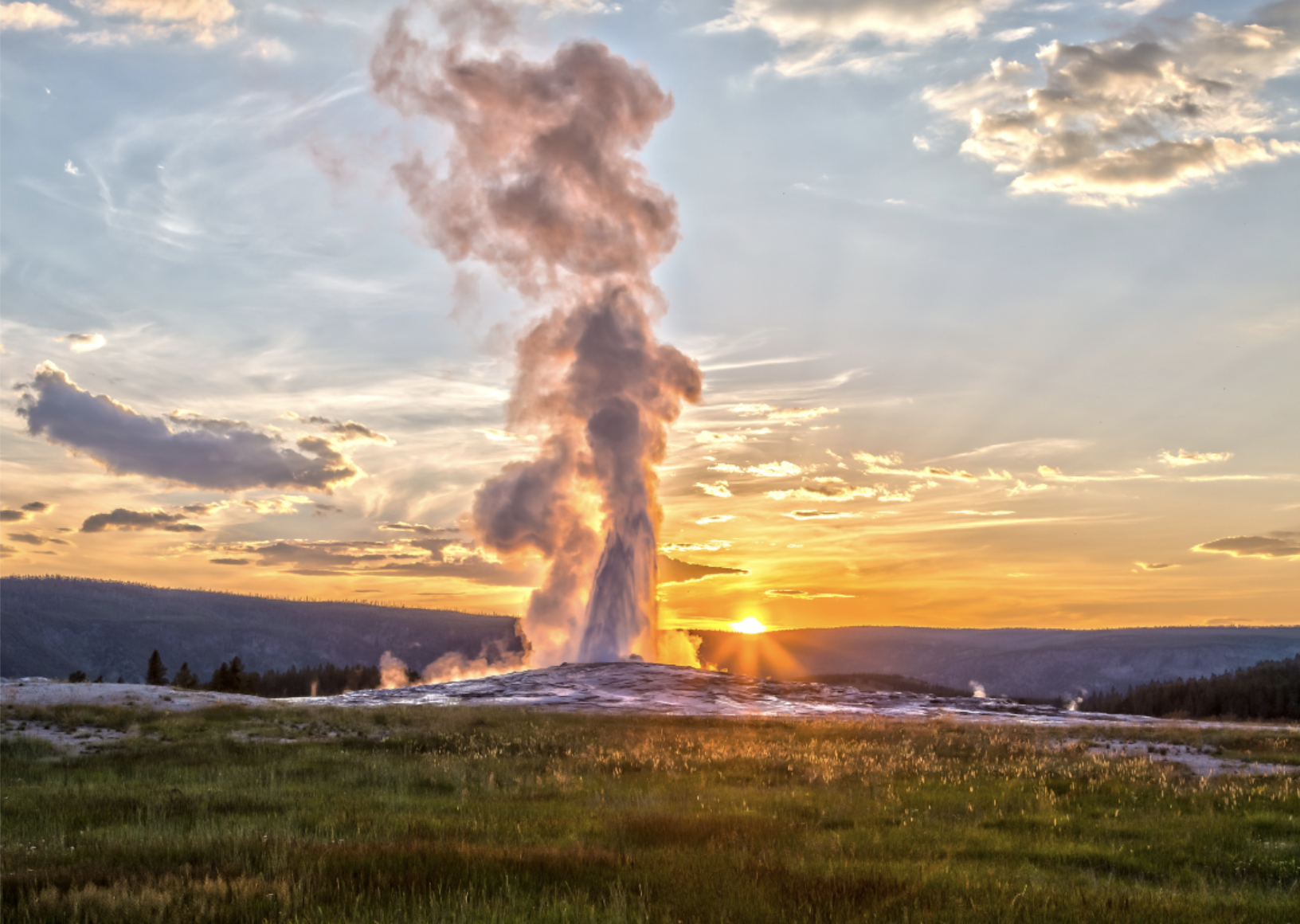
Susanne Pommer // Shutterstock
20 of the strangest natural phenomena in America
Old Faithful erupting in Yellowstone National Park at sunset.
As the fourth-largest country in the world, the United States has a vast assortment of picture-perfect natural scenery to flaunt. From the Alaskan Tundra to the Gulf of Mexico, Niagara Falls to the Hawaiian Islands, the contrasts between the 50 American states and five territories are fascinating and sometimes enigmatic.
Geological, physical, chemical, and biological phenomena have rational explanations, but some are so rare they seem to be a figment of a science fiction screenwriter’s imagination. Nonetheless, understandable or not, they do—unmistakably—indulge the senses.
From features in national parks to regional quirks, Stacker compiled a list of 20 of the strangest natural phenomena in the U.S. Anyone hoping to catch a glimpse of these phenomena must remain mindful of the risks they face in the wilderness and also of the damage they could inflict on the environment. Government and community organizations manage the grounds where many of these natural happenings occur—and are often available to guide visitors through their journey.
So, revel in that which only nature can offer, buckle up for a jaw-dropping adventure, and enjoy the ride.
You may also like: 50 incredible photos of our oceans
![]()
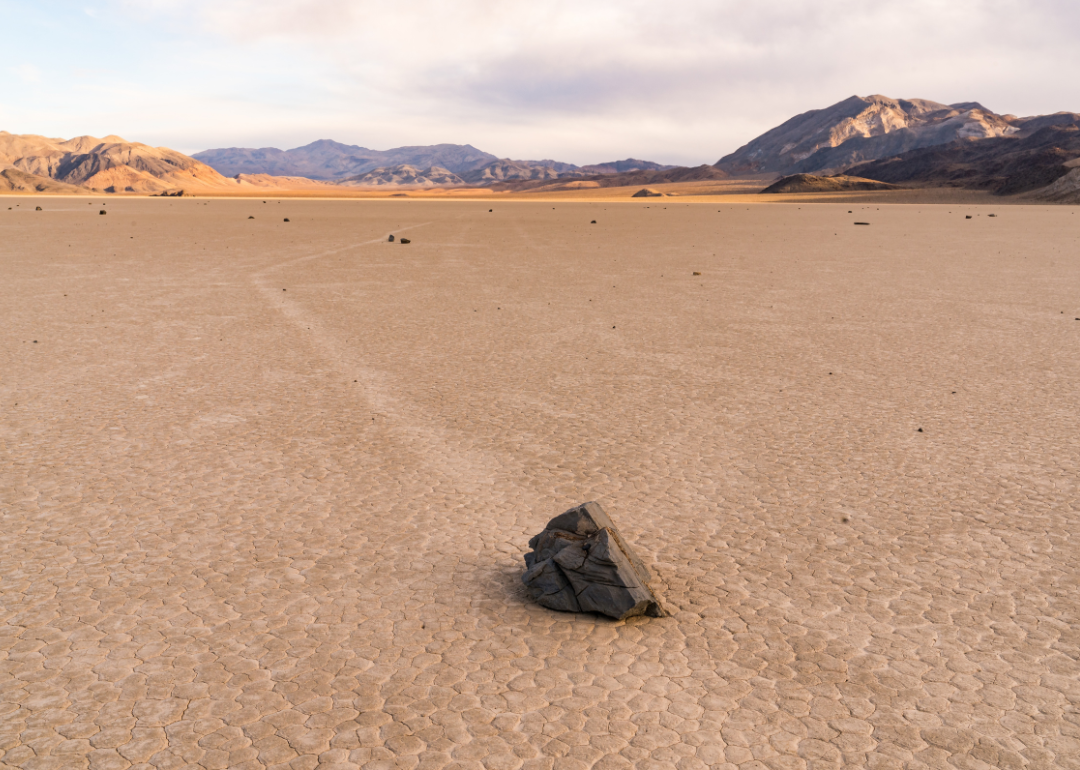
Paul Brady Photography // Shutterstock
Death Valley’s sailing stones
Sailing stones on the Racetrack Playa located in Death Valley National Park, Inyo County, California.
Death Valley National Park was established as a natural monument in 1933. Although its name could be more inviting, its beauty is undeniably unique. Its main attraction is the geological phenomenon known as the sailing stones—a mystery that kept scientists and explorers in awe for decades.
In the early 2010s, time-lapse photographs and rigorous investigations uncovered the enigma. The rocks, ranging from weighing a few ounces to over 700 pounds, move every winter without human or animal intervention when the wind blows strong enough to slide them over thin sheets of melting ice. The ice melts and moves when exposed to warm morning sunlight, a process known as ice shove.
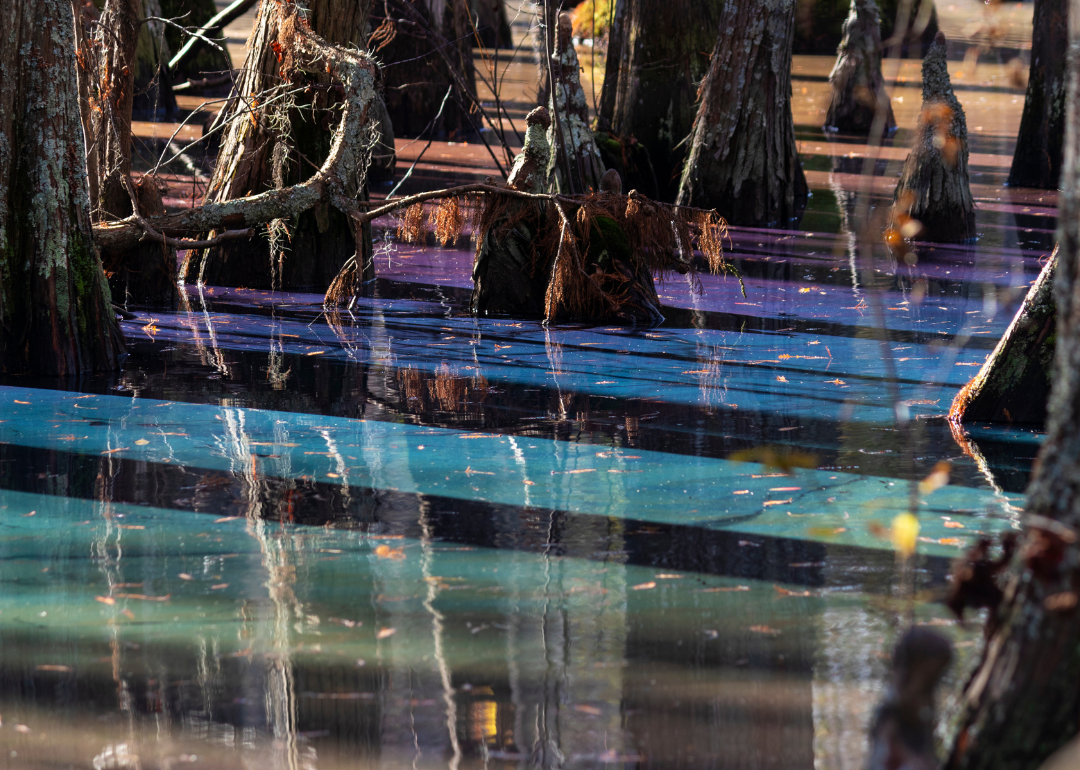
Kate Scott // Shutterstock
Florida’s colorful swamp
A rainbow sheen in a swamp as a result of decomposing plant matter.
When oils released by decaying vegetation drift into the pooled water of the Sunshine State’s wetlands, a rainbow-colored phenomenon decorates the scenery: Florida’s colorful swamp. The spots of oil slick reflect sunlight into trees and bushes, making them look multihued and vibrant. The natural spectacle can appear in any swamp and any time of the year, but it is rather notorious under a cloudless sunny sky and when humidity is at its highest.
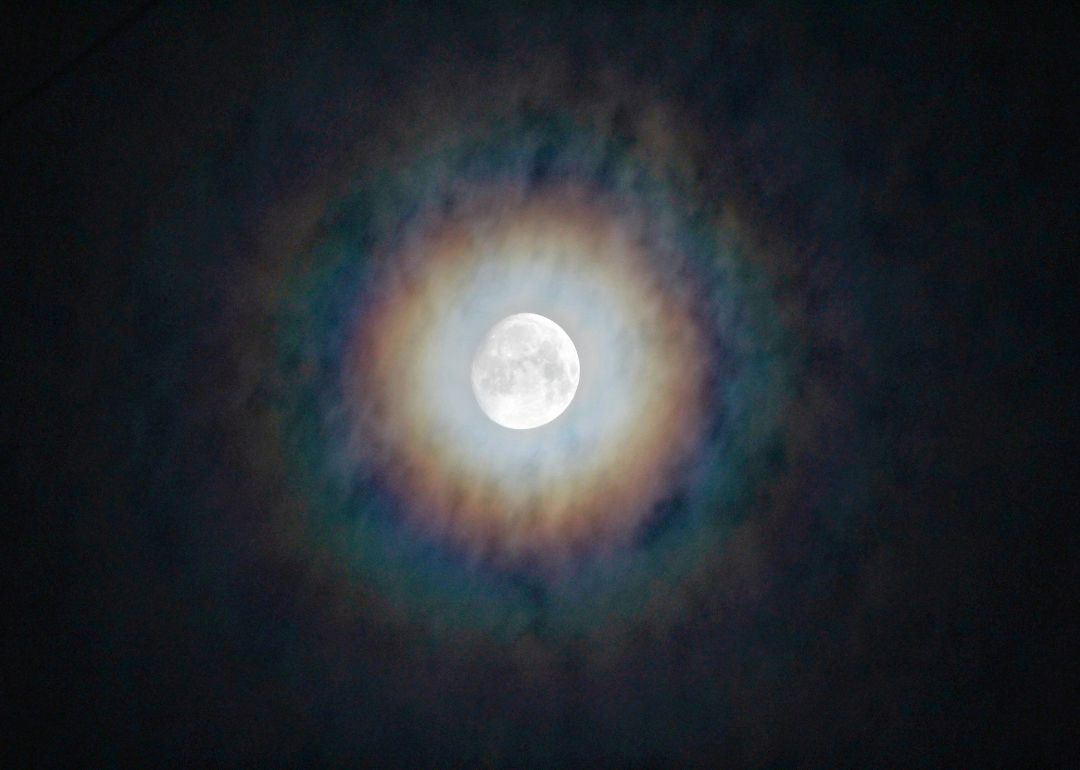
akphotography00 // Shutterstock
Lunar rainbows
A rainbow around the moon at night.
Much rarer than rainbows but just as marvelous, moonbows or lunar rainbows can appear when the moon is in or near its full phase and positioned low in the sky, most likely an hour before sunrise or after sunset. As with rainbows, water droplets must be in the air—from waterfalls, rain, or breaking waves—on the opposite side of the light-reflecting celestial body for the iridescent visual phenomenon to happen.
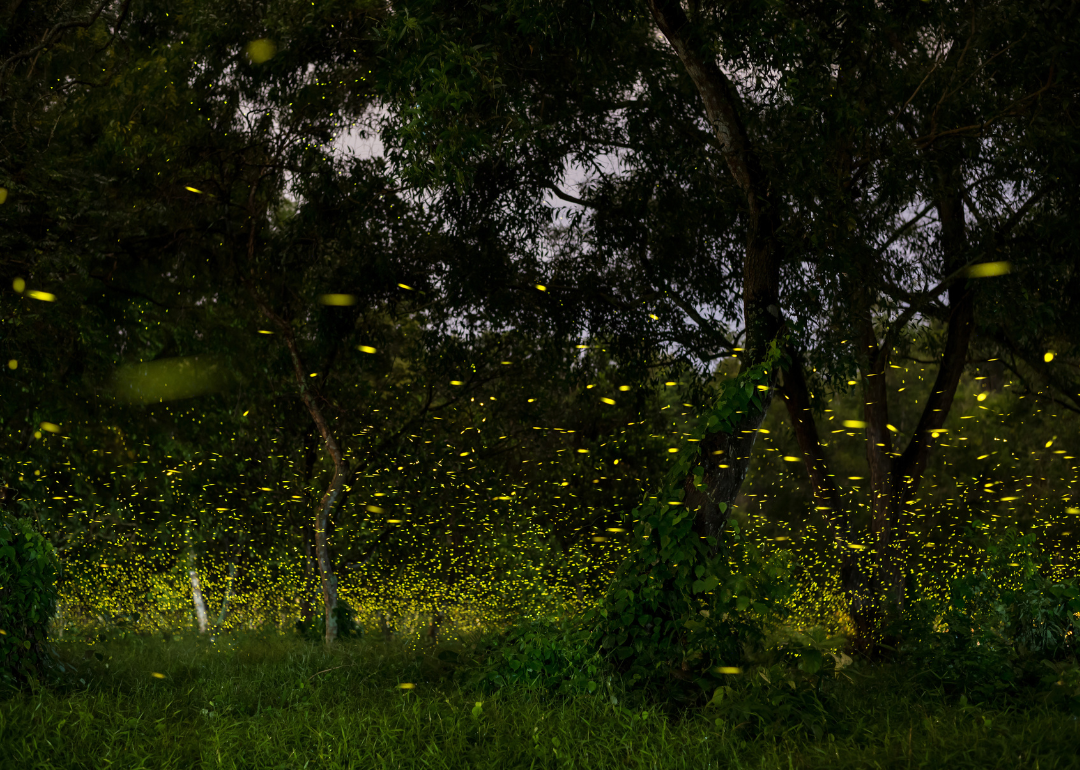
SIHASAKPRACHUM // Shutterstock
Great Smoky Mountains’ lightning bugs
A mass of fireflies all lit up in a forest.
Sometime between the third week of May and the third week of June, the beetle species, officially known as Photinus carolinus, will enter its mating season in the Great Smoky Mountains. Male fireflies synchronize their flashing lights so females can recognize them. The spectacle put on by millions of lightning bugs blinking simultaneously in the dark forest nights attracts hundreds of tourists who plan their visit several months in advance.
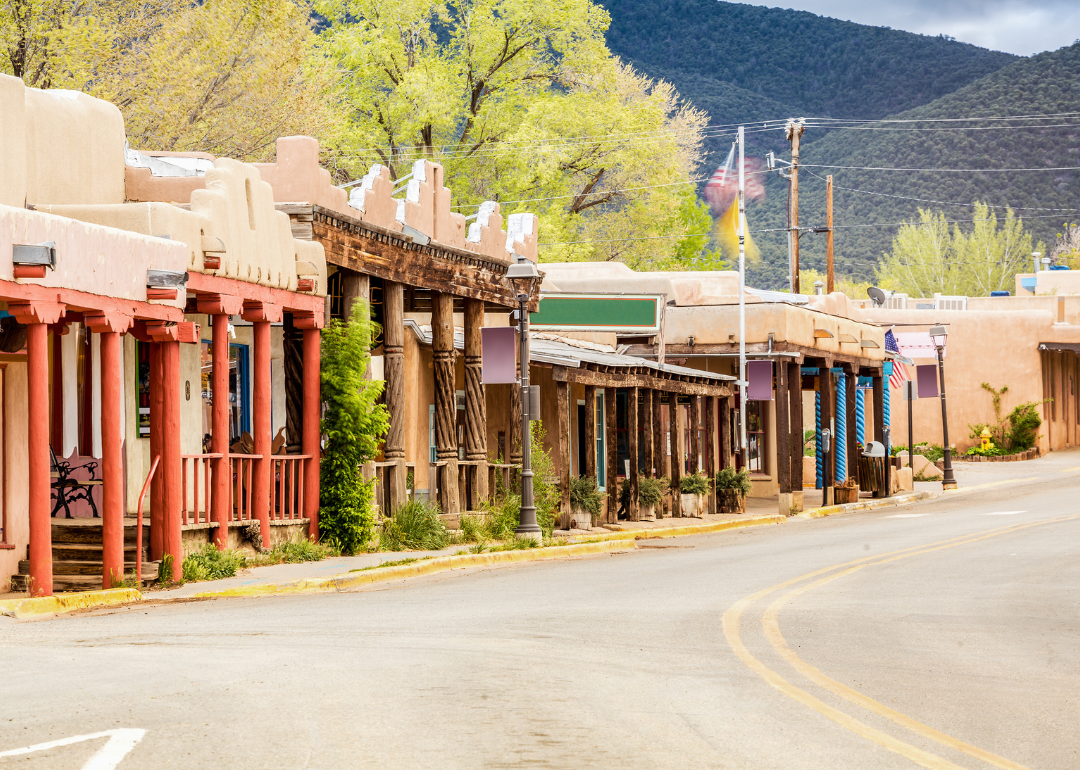
Sopotnicki // Shutterstock
Taos hum
Buildings lining a street in Taos, New Mexico.
To this day, there is no agreement among the scientific community about why 2% of people hear a low-frequency hum in the small town of Taos, New Mexico, and its surroundings since the 1990s. The explanations for the mystery range from plain boring—such as tinnitus—to amusingly creative, like secret government mind control experiments. Real or not, it seems like the only way to find out if there is a humming sound in the historic Taos area is to pay a visit and formulate your own hypothesis.
You may also like: Most popular historic sites in America
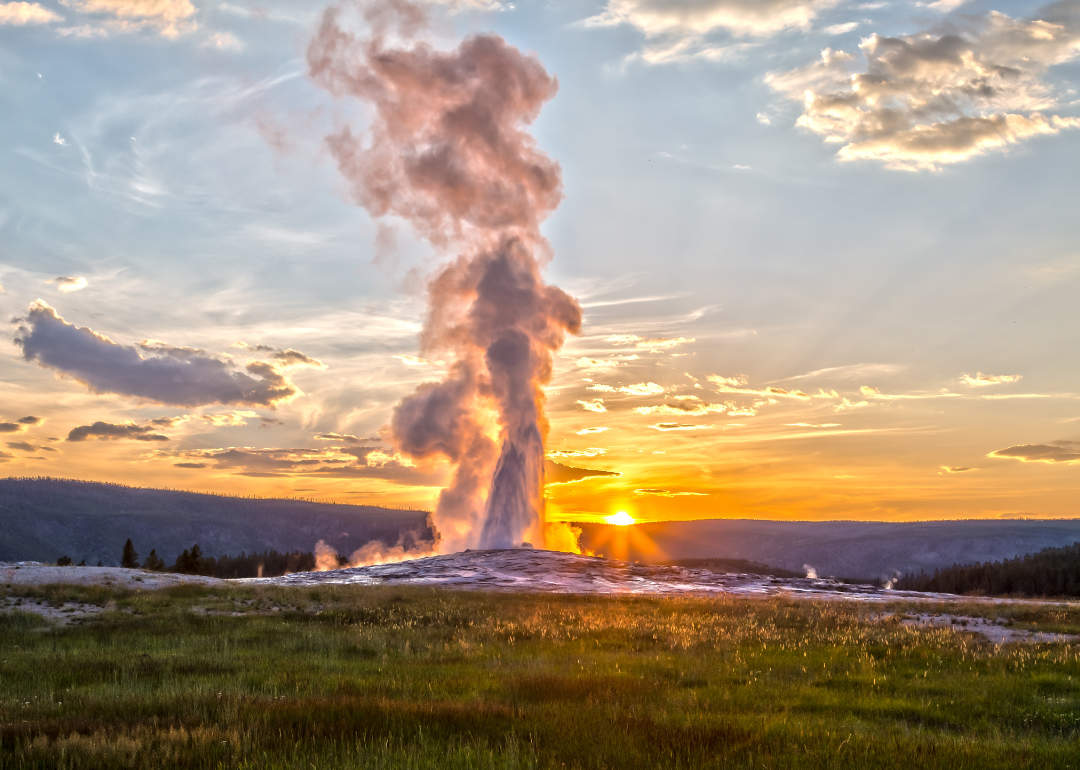
Susanne Pommer // Shutterstock
Yellowstone’s geysers
Old Faithful erupting in Yellowstone National Park at sunset.
The attractions of Yellowstone Park have been in the making for over half a million years. Geysers, hot springs, fumaroles, and mud pots result from the interaction between underground volcanic activity and groundwater. The superheated water of hot springs—trapped in channels leading to the surface—erupts when the steam in the inner layers of the volcanic caldera (where Yellowstone lays) lifts the cooler water in the upper layers causing the flashy phenomenon called geysers. The most famous performer of the geothermal show is Old Faithful, a highly predictable geyser that erupts every 45 to 100 minutes.
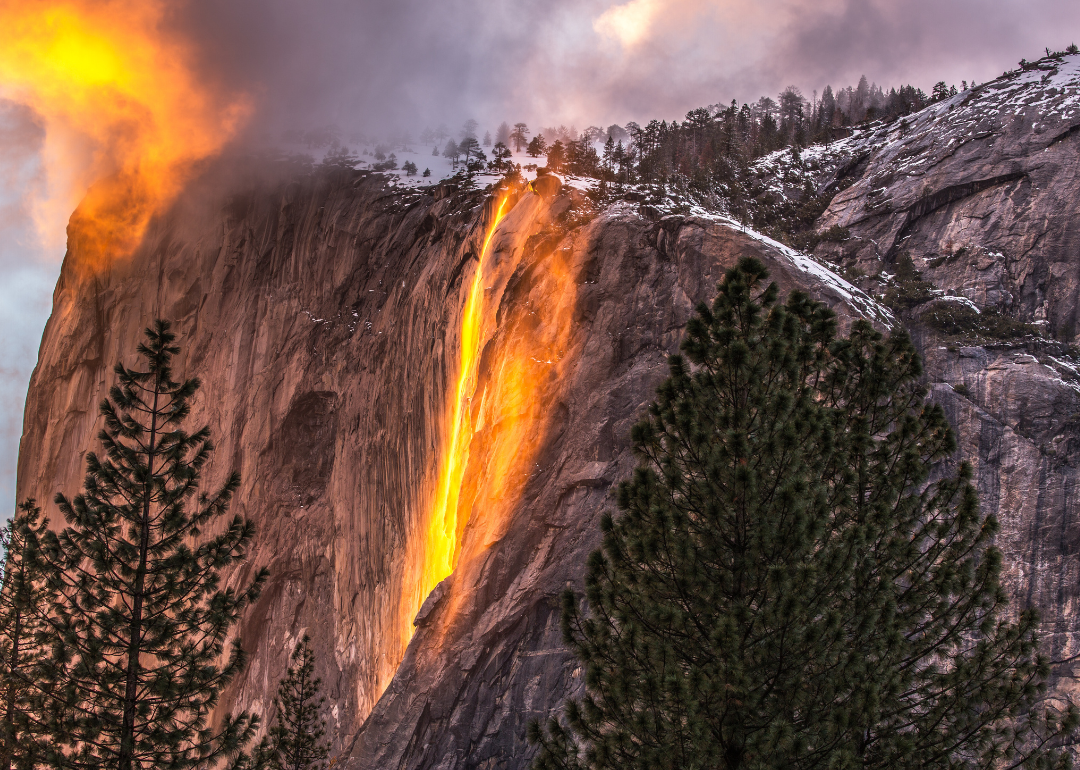
Gregory B Cuvelier // Shutterstock
Horsetail Fall in Yosemite
Horsetail Fall lit up bright orange in Yosemite National Park.
Every summer night for almost a century, burning hot embers were poured from Glacier Point in Yosemite National Park down the cliff to the valley below. The 3,000-foot drop of incandescent coal put on a magnificent show that attracted growing crowds from 1872 to 1968. Nowadays, a natural spectacle evocative of the man-made fire has taken center stage: Horsetail Fall in Yosemite, an evanescent waterfall that sometimes—during the two last weeks of February—turns bright orange when backlit by the sunset gleam.
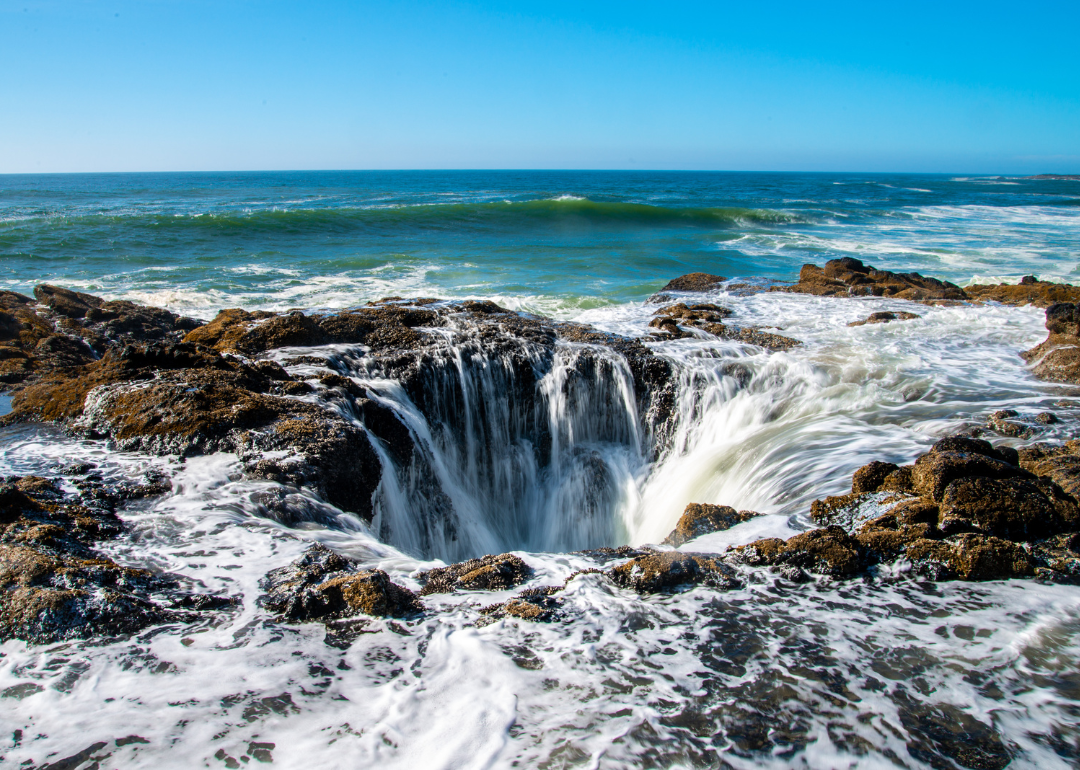
lu_sea // Shutterstock
Thor’s Well
Water cascading into Thor’s Well.
An hour before high tide, the Oregon Coast near Cape Perpetua seems peaceful and innocuous. As the minutes go by and the Pacific Ocean climbs closer to the shore, a 20-foot-deep sinkhole, known as Thor’s Well, begins to swallow the seawater. Not long after, the water overflows and starts erupting to heights of 25 feet. The water flowing and ejecting through the slippery basalt rock cavity during winter storms is a natural performance worthy of bearing the name of the mighty god of thunder. However, keep your distance: The phenomenon can be as dangerous as it is sensational.
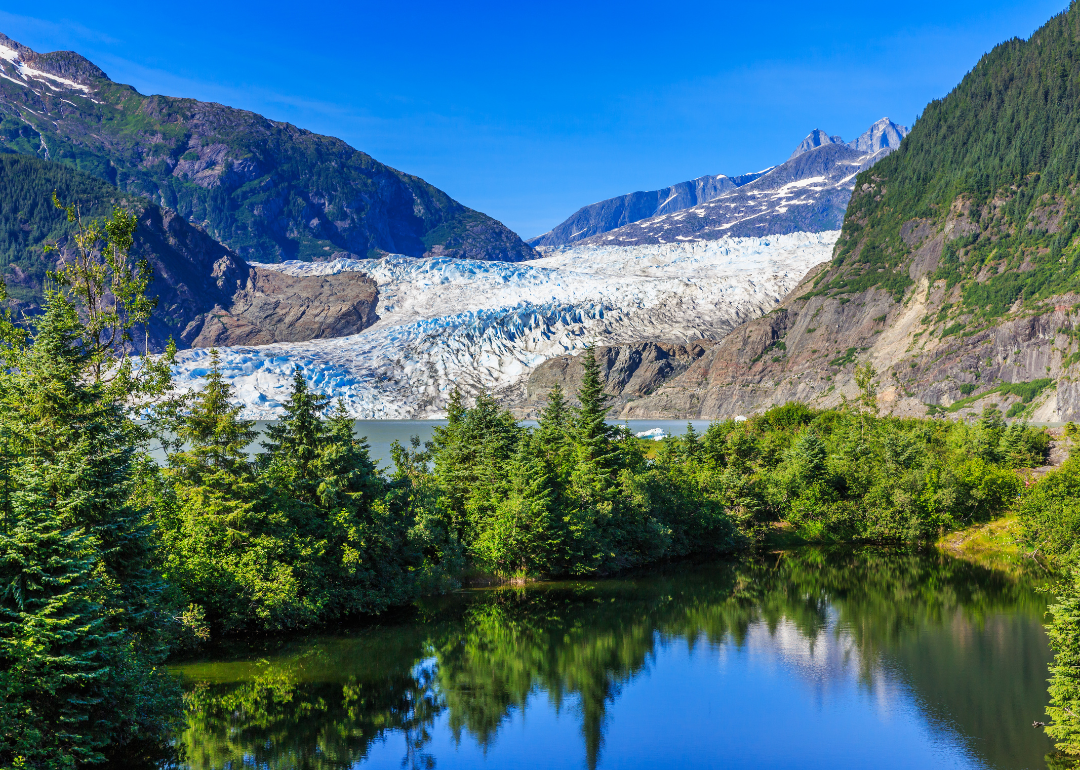
SCStock // Shutterstock
Mendenhall Glacier
Mendenhall Glacier in Juneau with a reflection of the scenery in the lake.
Alaska’s scenery is unparalleled. Many of nature’s finest exhibits call the northernmost state home. One is Mendenhall Glacier, an enormous glacier that flows from the Juneau Icefield, a 1,500-square-mile stretch of rock, snow, and ice. The frozen giant started retreating three centuries ago when its annual melting began exceeding its annual accumulation of ice. Nevertheless, it would take hundreds of years for the glacier to disappear completely, so there is more than enough time to visit it and admire its greatness.
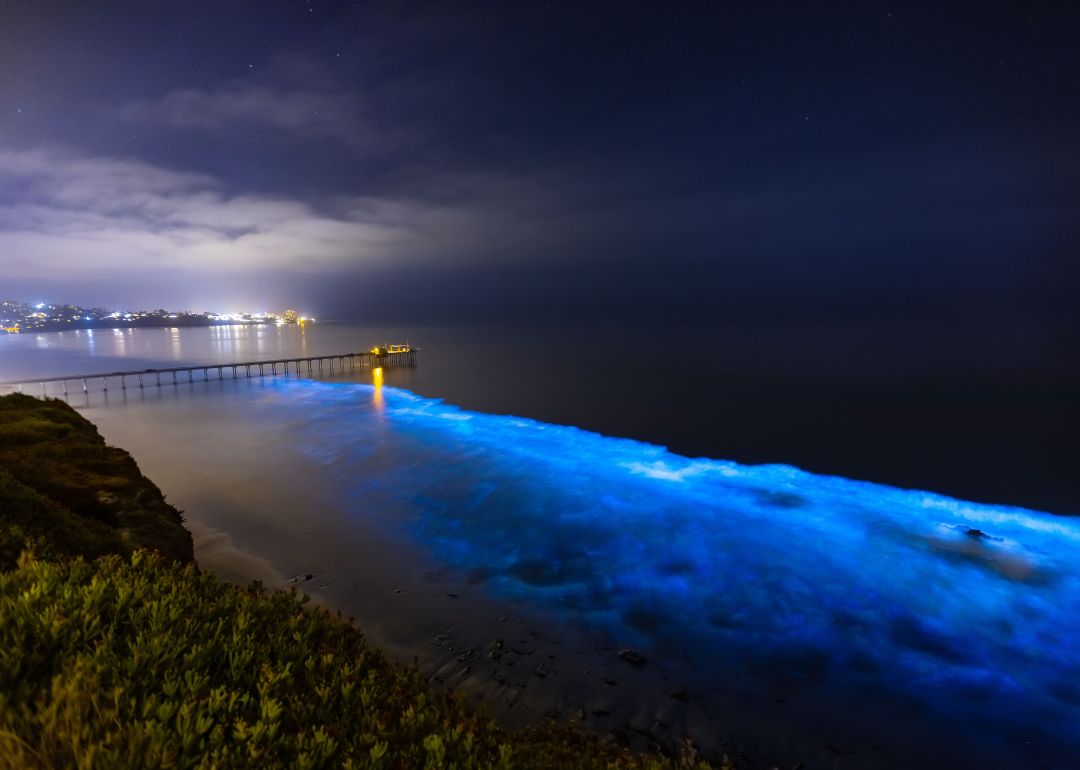
WeichengHan // Shutterstock
San Diego bioluminescent shore
The shore of San Diego as seen in summer while neon blue.
Neon blue, glowing sparkles light up San Diego’s beaches during the nights of the last weeks of summer. The eye-opening event occurs when microorganisms named Dinoflagellates travel back and forth on the ocean waves. Images of surfers, boaters, and even dolphins splashing through the glimmering water are all over the internet. Still, nothing beats the experience of seeing the bioluminescent shores with your own eyes. The occurrence is not exclusive to San Diego; it can be seen on several beaches along California’s coastline.
You may also like: Oldest national parks in America
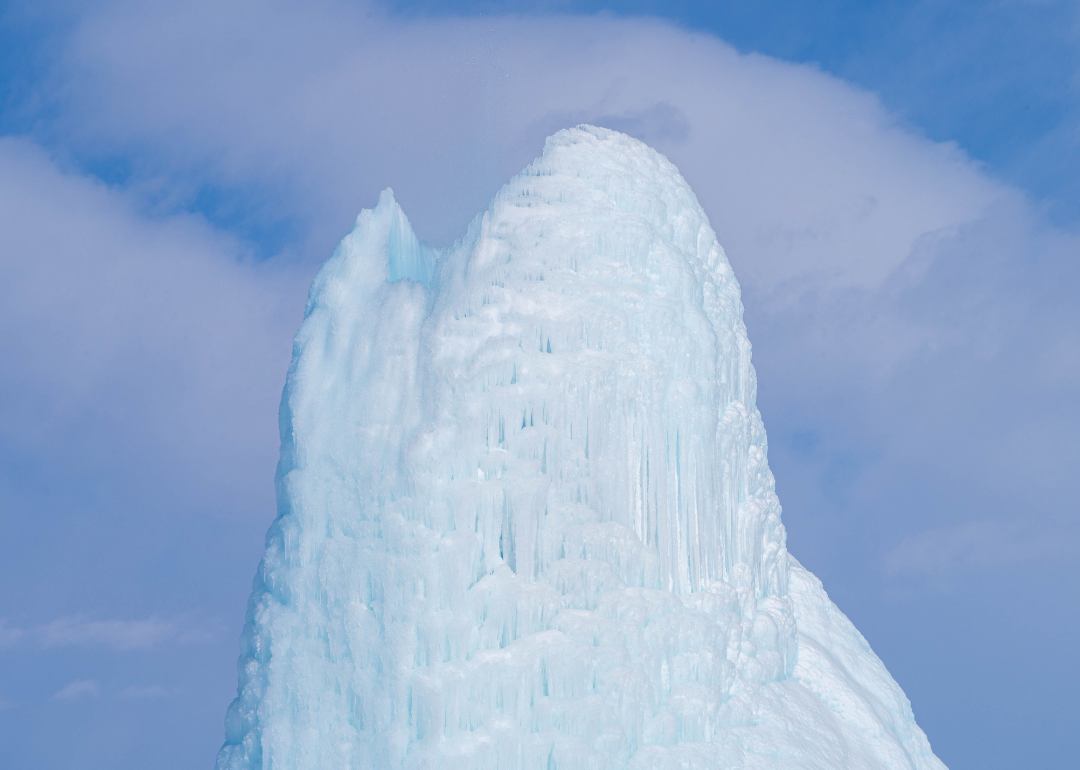
Yernar Almabek // Shutterstock
New York’s ice volcano
An ice volcano in front of a blue sky.
Letchworth State Park in western New York hosts a yearly natural event known as the ice volcano. In the middle of winter, constant frosty temperatures allow the water of a fountain (fed by a natural pond uphill) to freeze until it reaches heights of 20 to 50 feet. The cone-shaped structure forms next to the Glen Iris Inn, once the mansion of an iron magnate and philanthropist after whom the scenic park was named.
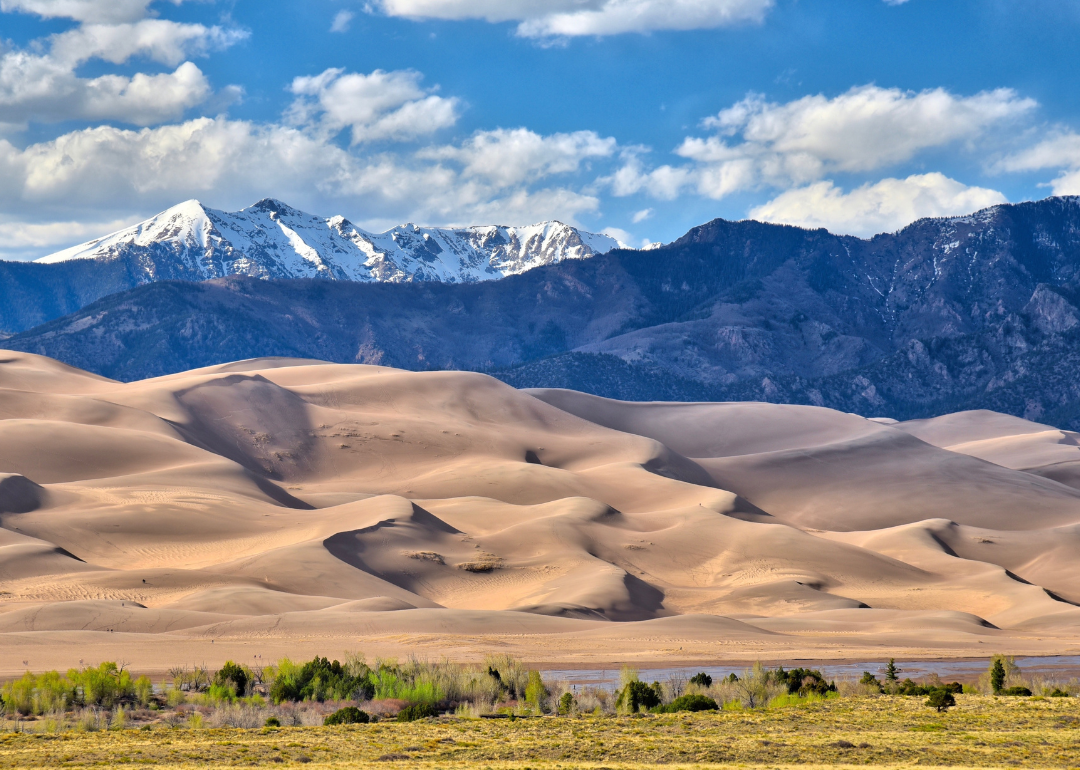
Eric Brinley // Shutterstock
Singing sands at Great Sand Dunes National Park
A scenic view of Great Sand Dunes National Park with towering mountains in the background.
The air pushing through the sand grains of an avalanche at the Great Sand Dunes National Park creates sounds similar to those made by certain birds or insects. The singing or booming sands usually occur during sandstorms or when people push the sand down the dunes. Due to the various applications of this sound in song and ritual, it is a natural phenomenon that has attracted adventurers, artists, and mystics to the San Luis Valley in south-central Colorado for decades.
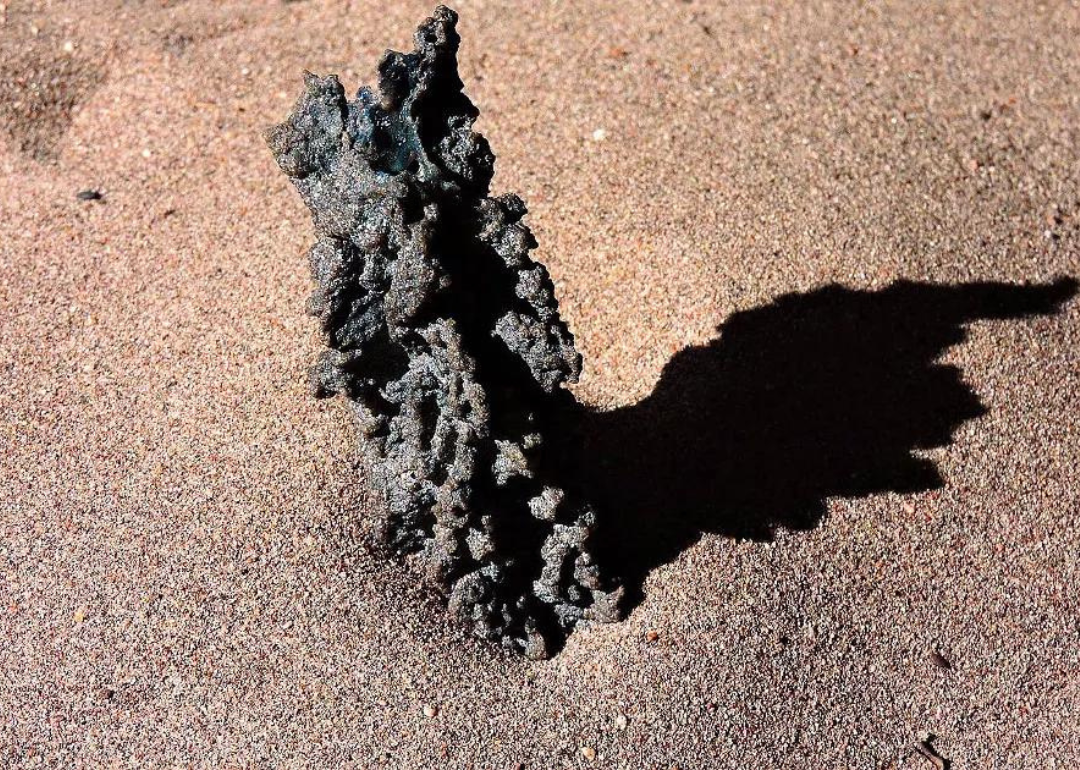
Patrick Myers // National Park Service
Petrified lightning at Great Sand Dunes National Park
Fulgurites at Great Sand Dunes National Park & Preserve.
The sculptures made when dry sand is struck by lightning are called fulgurites. Even though they look like rocks—which gives them the nickname of petrified lightning—they truly are glass tubes covered by burnt sand. The largest dunes in the U.S. found in the Great Sand Dunes National Park are the ideal place to find these whimsical pieces of natural art. However, if you ever find yourself in the desert during a thunderstorm, get away from the dunes immediately.

Joseph // Shutterstock
Sounds of Coqui frogs in Puerto Rico
A Coquí frog sitting on a leaf.
Mother Nature was quite generous when creating the paradisiacal island of Puerto Rico. Breathtaking beaches and luscious tropical forests are the main attractions of the Caribbean nation, yet the top prize of Puerto Rican pride goes to a tiny and noisy little frog: the coquí. Tourism advertisements and pop culture have made the coquí famous for its “singing.” The name of these tiny amphibians is an onomatopoeia, resembling their cheerful song pretty accurately.
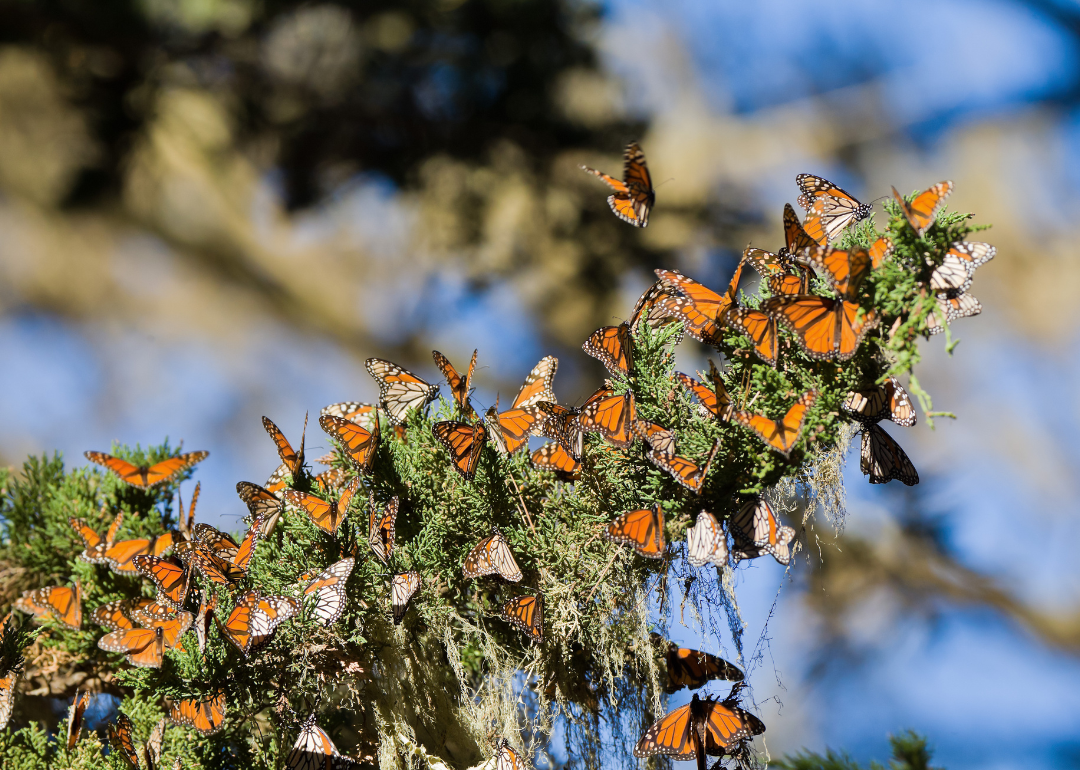
Anatoliy Lukich // Shutterstock
Overwintering monarchs in California
Monarch butterflies clustering together on pine and eucalyptus trees during their migration to overwinter in Monarch Grove Sanctuary, Pacific Grove.
As autumn settles in, thousands of monarch butterflies leave the western slopes of the Rocky Mountains to spend the cooler months in the central coast region of California. The bright-colored insects gather mostly at Pismo State Beach in San Luis Obispo County, roughly midway between Los Angeles and San Francisco, but can also be found in several other locations down the Pacific coast. The amalgam of a massive number of overwintering monarchs and the green foliage is a delightful sight that impresses spectators, especially the younger ones.
You may also like: Airlines most likely to lose or damage your luggage
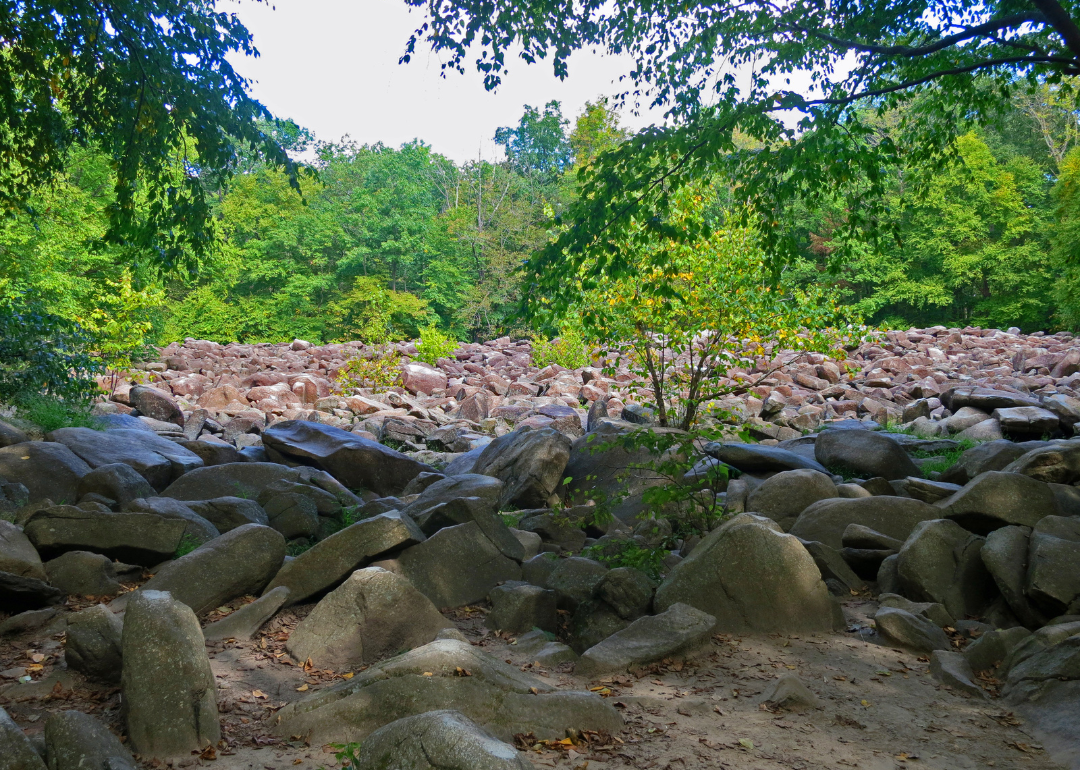
Jim Bogosian // Shutterstock
Pennsylvania’s ringing rocks
The sonorous stones of Ringing Rocks Park, near Falls Creek Waterfall in Bucks County.
In a 123-acre park on the eastern border of Pennsylvania—where the Delaware River separates it from New Jersey—a field of boulder rocks ring like bells when hit with a hammer. Although the main course of Ringing Rocks Park is the attraction to which it owes its name, the riverside forest is also an ideal destination for hiking, biking, and picnicking. To round up a trip on a different note, Bucks County—where the park is located—is home to several long-standing breweries, wineries, and distilleries.
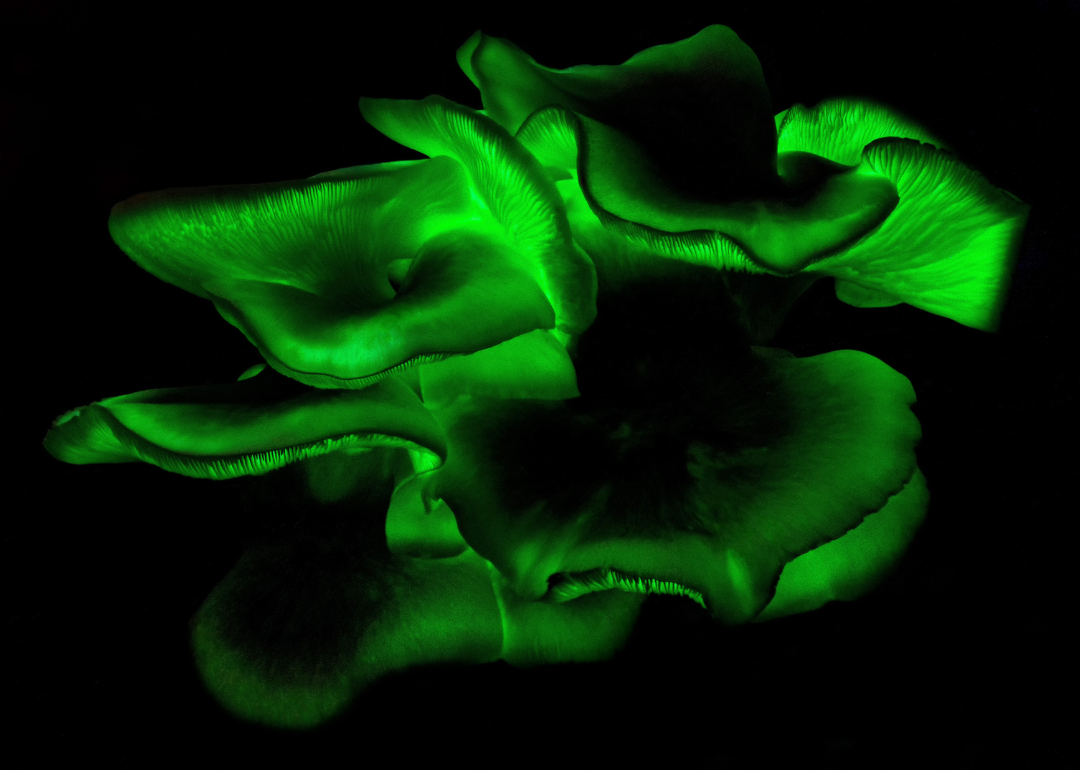
Anne Powell // Shutterstock
Bioluminescent fungi in Appalachia
Bioluminescent fungi glowing green at night.
Most of us are familiar with pixie dust, but have you heard about fairy fire? Deep in the woods of the Appalachian Mountains, a rare phenomenon takes place in the dark: bioluminescent fungi illuminate the forest bed and decaying tree logs with a bright green glow. This state of brightness is caused by an oxidative enzyme called luciferase, which can be so potent that the radiance might remain visible even when the fungi are taken out of the forest. Conditions for the mushrooms to light up are very particular, so you might only sometimes find foxfire, as it is also known. Nonetheless, there are better chances if you explore the southern Appalachians.
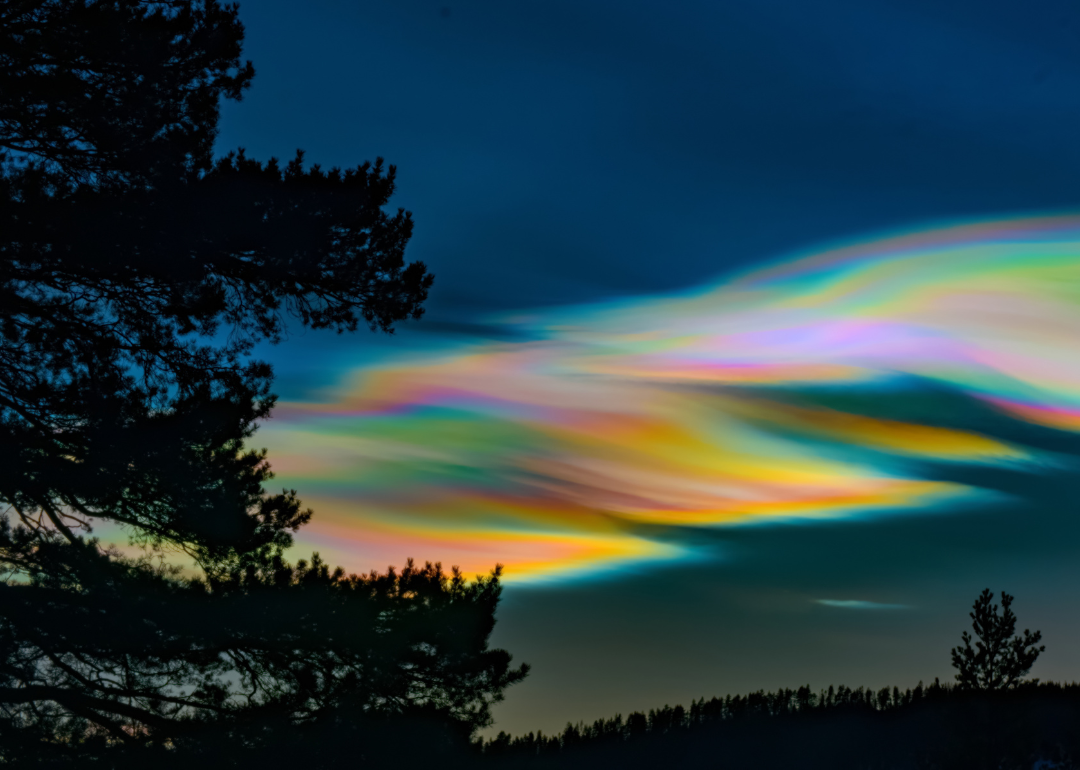
Uwe Michael Neumann // Shutterstock
Mother-of-pearl clouds in Alaska
Mother-of-pearl clouds in Norway.
Officially named polar stratospheric clouds, this natural event only happens when the temperature above the Arctic Circle falls below minus 114 degrees F, causing widely spaced water molecules to blend and form ice crystals in the otherwise dry stratosphere. High-altitude sun rays beam into the ice, reflecting rainbow-hued light into the clouds. Since the only U.S. state that is part of the Arctic Circle is Alaska, it’s the only one where you might be able to catch a glimpse of this mesmerizing color display.

yeoojk // Shutterstock
Pittsburgh’s Gravity Hill
A winding country road at sunset.
Many claim that cars roll uphill when put on neutral at an apparently ordinary intersection in the Pittsburgh area. Though no scientific research has been conducted to confirm or deny the assertions, plenty of videos of the incident exist on the internet. The location is known as Gravity Hill, since the most agreed-upon explanation of the phenomenon is a glitch in the planet’s gravitational field.
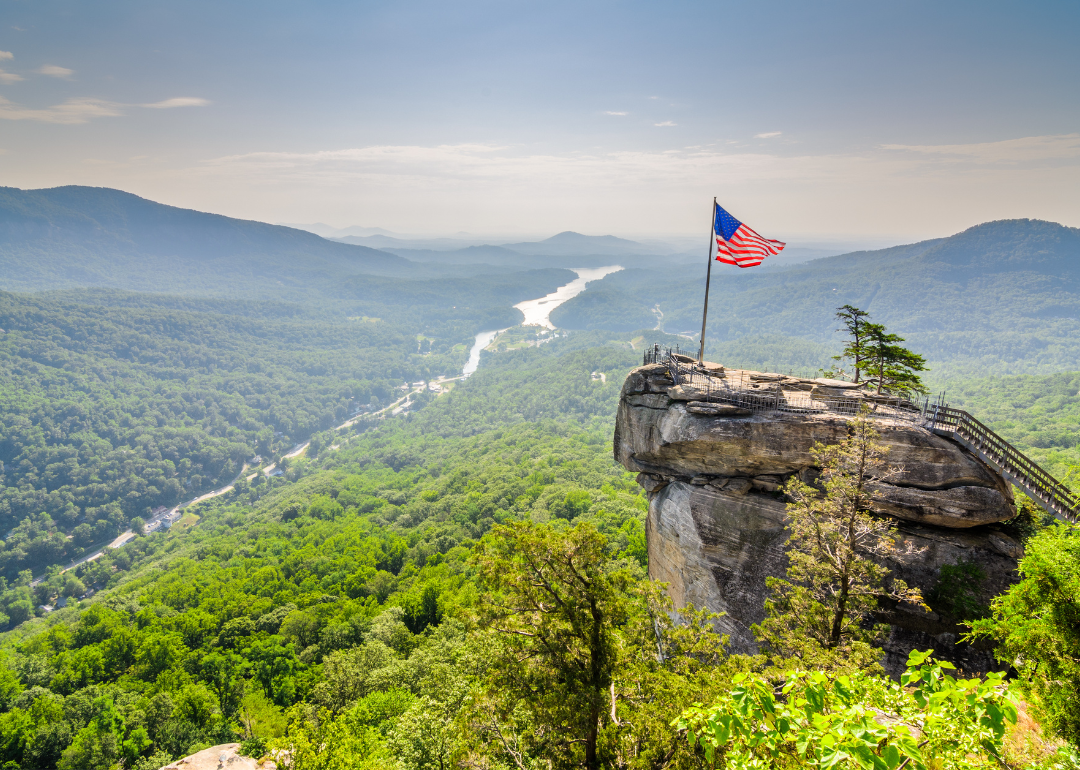
Sean Pavone // Shutterstock
Nebraska’s Chimney Rock
A scenic view of Chimney Rock in Nebraska, overlooking a scenic view of Chimney Rock State Park.
The monumental natural tower known as Chimney Rock is a prehistoric formation embellishing Nebraska’s North Platte River Valley. Towering at 480 feet, it is a symbolic point of the Oregon Trail. Many pioneers and migrants mentioned Chimney Rock in the written and oral recollections of their journeys to the West, making it an unassuming protagonist of an emblematic portion of American history. (It is not to be confused with the scenic viewpoint in North Carolina that goes by the same name.)
You may also like: Must-drive roads in every state